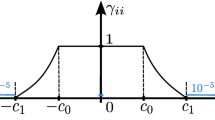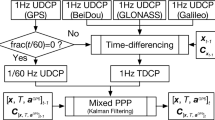Abstract.
Global positioning system (GPS) carrier phase measurements are used in all precise static relative positioning applications. The GPS carrier phase measurements are generally processed using the least-squares method, for which both functional and stochastic models need to be carefully defined. Whilst the functional model for precise GPS positioning is well documented in the literature, realistic stochastic modelling for the GPS carrier phase measurements is still both a controversial topic and a difficult task to accomplish in practice. The common practice of assuming that the raw GPS measurements are statistically independent in space and time, and have the same accuracy, is certainly not realistic. Any mis-specification in the stochastic model will inevitably lead to unreliable positioning results. A stochastic assessment procedure has been developed to take into account the heteroscedastic, space- and time-correlated error structure of the GPS measurements. Test results indicate that the reliability of the estimated positioning results is improved by applying the developed stochastic assessment procedure. In addition, the quality of ambiguity resolution can be more realistically evaluated.
Similar content being viewed by others
Author information
Authors and Affiliations
Additional information
Received: 13 February 2001 / Accepted: 3 September 2001
Rights and permissions
About this article
Cite this article
Wang, J., Satirapod, C. & Rizos, C. Stochastic assessment of GPS carrier phase measurements for precise static relative positioning. Journal of Geodesy 76, 95–104 (2002). https://doi.org/10.1007/s00190-001-0225-6
Issue Date:
DOI: https://doi.org/10.1007/s00190-001-0225-6




